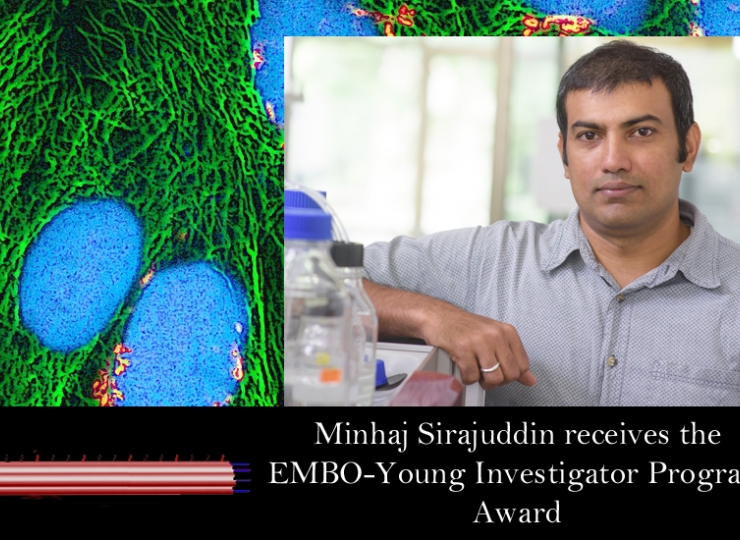A little boy pelts across the playground. His toe catches on a tussock of grass and he sprawls down on the ground scraping his knee. He nonchalantly brushes away a speck of blood and gets back to his game. Scrapes, cuts and nicks are such common assaults on our skin in day-to-day life that we almost never worry about them. This is mainly because our bodies have an intricate and very efficient repair mechanism that heals the all-too-common breaches on skin.
Although the skin’s wound healing process is an incredibly complex mechanism, new research has given us an important insight into this essential phenomenon – inflammation is a key step in wound closure. A consortium of scientists from the IFOM-inSTEM Joint Research Laboratory (Institute for Stem Cell Biology and Regenerative Medicine, Bangalore) and the University of California have shown that signals from immune cells are necessary to stimulate the growth of skin cells during injury repair.
The healing process in skin wounds occurs in three interdependent phases. First, the damaged site is thoroughly cleaned of bacteria or other potentially harmful agents by immune cells recruited in the inflammatory phase. Next, skin cells begin to divide and reconstruct the damaged area in the proliferative phase. In the third phase, remodelling alters the architecture of the surrounding tissues to finally close the wound. The recent study described in this article has now demonstrated that the inflammatory phase is essential for the second stage of wound repair to set in.
Central to understanding the mechanisms of wound repair in this study was the molecule “caspase-1”. Although caspase-1 is known to be involved in inflammatory processes, its expression and regulation was poorly understood. In the context of wound repair and healing, this study explored the mechanism of caspase-1 control and its effects on inflammatory signalling. This led to the discovery that caspase-1 mediated signalling events also affected skin cell division during wound closure.
Using a mouse model system, researchers found that a well-known mediator of inflammatory responses – the protein complex NF-κB (Nuclear Factor kappa-light-chain-enhancer of activated B cells) – upregulates the genetic expression of caspase-1 in skin injuries. Caspase-1 is an enzyme whose main role in inflammation is to “trim” the precursor proteins of certain interleukins (ILs) into their active forms. Of these, the interleukin IL-1 enhanced NF- κB function increased caspase-1 production in a self-amplifying cycle that propagated the inflammatory signal throughout the skin-cell layer known as the epidermis. This signalling by caspase-1 via IL-1 was not only effective in recruiting immune cells to the wound site, it was also found to regulate a signal loop that stimulated skin cell division. Any disruption in this NF-κB /caspase-1/IL-1 communication line was found to not only disrupt the inflammation stage, but it also delayed wound closing.
The study, which was published in the Journal of Investigative Dermatology has improved the current understanding of the events in wound healing. It maps out the sequence of signals that link the growth phase of healing in skin injuries to the inflammatory phase that precedes it. “The work not only untangles a part of the complex wound repair process, but it also provides insights on inflammatory signalling mechanisms,” says Colin Jamora, the corresponding author for this study. “In the long run, the molecular understanding we have revealed will help in developing new therapeutic strategies to enhance the normal wound healing and combat diseases in which inflammation is a major component”, he adds.
About the study:
The paper appeared in the Journal of Investigative Dermatology on 7th May 2015, and can be accessed here: http://www.nature.com/jid/journal/v135/n8/full/jid2015119a.html
About the authors:
Colin Jamora is affiliated to the IFOM-inSTEM Joint Research Laboratory, Institute for Stem Cell Biology and Regenerative Medicine, Bangalore, India and the University of California, San Diego, USA.
Manando Nakasaki and Isha Rana are affiliated to the IFOM-inSTEM Joint Research Laboratory, Institute for Stem Cell Biology and Regenerative Medicine, Bangalore, India.
Dai-Jen Lee, Fei Du, Shih-Wei Chen, Manando Nakasaki, Isha Rana, Vincent F S Shih and Alexander Hoffmann are affiliated to the University of California, San Diego, USA.
Contact Details:
Email: colinj@ncbs.res.in










